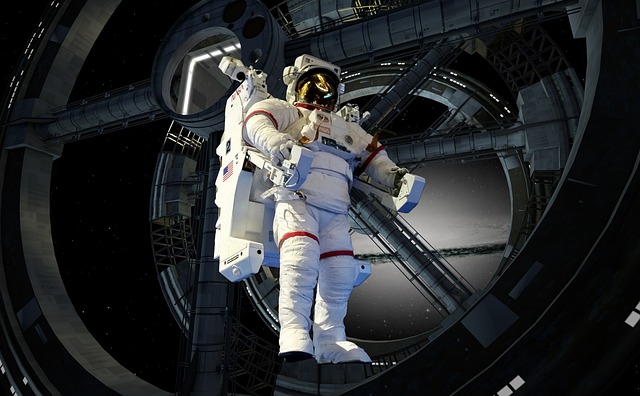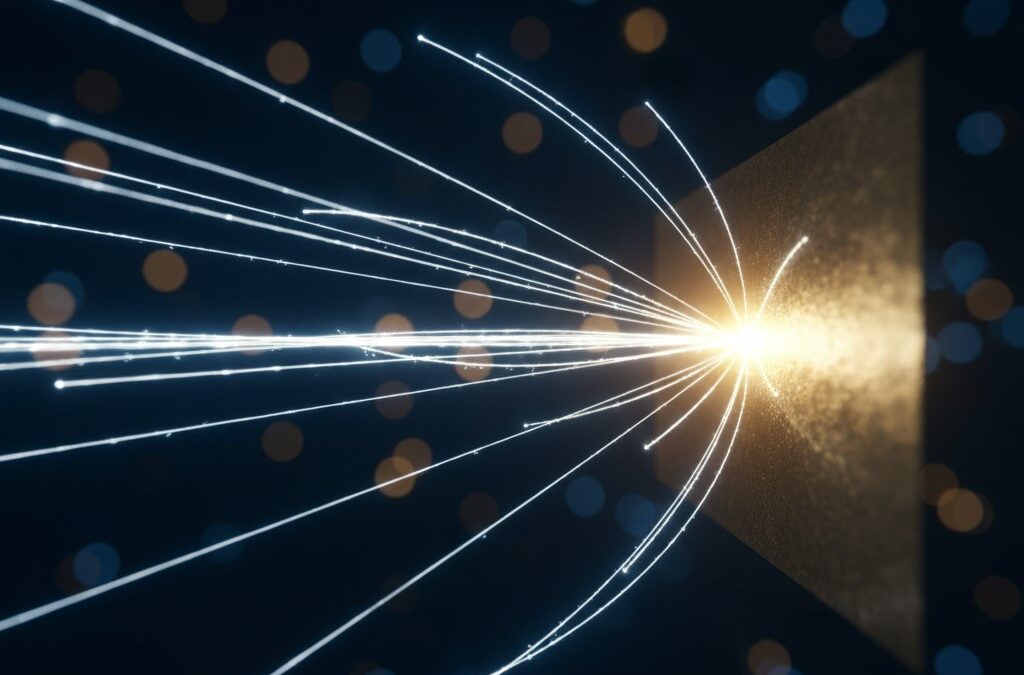The cosmos continues to fascinate us, and the recent news that NASA Astronauts Arrive ISS is a significant reminder of humanity’s ongoing quest to explore the heavens. This mission, bringing together astronauts and cosmonauts from various nations, highlights the international collaboration that defines space exploration. As we delve into the details of this event, we’ll explore the intricacies of the journey, the scientific pursuits that await, and the profound implications of humanity’s presence in the final frontier. The launch, the docking, and the scientific endeavors all contribute to a narrative of innovation and the unyielding human desire to push boundaries.
Table of Contents
- The Celestial Voyage: A New Crew’s Arrival at the International Space Station
- A Symphony of Science: Unveiling the Expedition 72 and 73 Missions
- The Human Element: Jonny Kim’s Pioneering Journey and the Future of Space Exploration
- Expanding Horizons: The Significance of International Collaboration and the Future of Space
The arrival of the new crew at the International Space Station is a major milestone. The recent docking of the Soyuz MS-27 spacecraft, carrying the crew, marks the beginning of a new chapter for the ISS. NASA Astronauts Arrive ISS, expanding the scientific capabilities of the station and reinforcing the international cooperation essential for the success of space endeavors. This collaborative spirit, as embodied by this mission, is a beacon of hope.
We also Published
The cosmos, that vast and enigmatic expanse, continues to beckon humanity. The recent arrival of a new crew at the International Space Station (ISS) serves as a potent reminder of our enduring quest to explore the heavens. This latest mission, bringing together astronauts and cosmonauts from diverse nations, underscores the spirit of international collaboration that defines space exploration. As we delve into the details of this momentous event, we shall uncover the intricacies of the journey, the scientific endeavors that await, and the profound implications of humanity’s presence in the final frontier. The launch, the docking, the scientific pursuits – all contribute to a narrative of innovation, perseverance, and the unyielding human desire to push the boundaries of what is known and what is possible. This is not merely a report of events; it is a testament to the indomitable spirit of exploration.
The Celestial Voyage: A New Crew’s Arrival at the International Space Station
The recent arrival of NASA astronaut Jonny Kim, alongside Roscosmos cosmonauts Sergey Ryzhikov and Alexey Zubritsky, at the International Space Station (ISS) marks a significant milestone in the ongoing saga of space exploration. Their journey, a testament to the precision of modern engineering and the unwavering dedication of the individuals involved, began with the launch of the Soyuz MS-27 spacecraft from the Baikonur Cosmodrome in Kazakhstan. This launch, a carefully orchestrated ballet of technology and human expertise, propelled the crew towards their orbital destination. The three-hour, two-orbit journey culminated in a successful docking with the Prichal module, signifying the beginning of a new chapter for the ISS and its inhabitants. This arrival not only expands the scientific capabilities of the station but also reinforces the international cooperation that is crucial for the success of space endeavors. The collaborative spirit, as embodied by this mission, is a beacon of hope in a world often divided.
The Soyuz MS-27 spacecraft’s docking with the Prichal module at 4:57 a.m. EDT was a moment of profound significance. This event, meticulously planned and executed, represents the culmination of countless hours of preparation, training, and technological innovation. The docking process, a complex maneuver involving precise calculations and delicate adjustments, is a testament to the ingenuity of the engineers and the skill of the crew. The Prichal module, a relatively new addition to the ISS, serves as a vital hub for future missions, providing additional docking ports and facilitating scientific research. The launch itself, occurring at 1:47 a.m. (10:47 a.m. Baikonur time), highlights the global nature of space exploration, bringing together expertise and resources from different nations. The arrival of Kim, Ryzhikov, and Zubritsky expands the ISS crew to ten for a period of two weeks, promising a wealth of new scientific investigations and collaborative efforts.
A Symphony of Science: Unveiling the Expedition 72 and 73 Missions
The arrival of the new crew members heralds the commencement of a period of intense scientific activity aboard the ISS. The Expedition 72 crew, already in residence, welcomes the newcomers with open arms, anticipating the wealth of knowledge and expertise they bring. The combined crew, now comprising NASA astronauts Nichole Ayers, Anne McClain, and Don Pettit, JAXA astronaut Takuya Onishi, and Roscosmos cosmonauts Kirill Peskov, Ivan Vagner, and Alexey Ovchinin, will embark on a series of investigations spanning a multitude of scientific disciplines. These studies, ranging from technology development to Earth science, biology, and human research, are designed to expand our understanding of the universe and our place within it. The collaborative nature of the mission, with scientists from different nations working together, underscores the unifying power of scientific inquiry. The collective efforts promise to yield valuable insights, pushing the boundaries of human knowledge and paving the way for future space exploration.
The scientific endeavors planned for Expedition 72 and 73 are diverse and ambitious. The focus on technology development will undoubtedly lead to advancements in spacecraft design, robotics, and other critical areas. Earth science investigations will provide valuable data on climate change, environmental monitoring, and the dynamics of our planet. Biological research will explore the effects of microgravity on living organisms, potentially leading to breakthroughs in medicine and biotechnology. Human research will delve into the physiological and psychological impacts of long-duration spaceflight, helping to prepare astronauts for future missions to the Moon and Mars. The ceremonial change of command, where Ovchinin will transfer the distinction to Onishi, is a symbolic representation of the continuity of human presence in space. The departure of Pettit, Ovchinin, and Vagner, after a seven-month science mission, marks the conclusion of one chapter and the beginning of another, ensuring the continuous progress of scientific discovery. The arrival of the new crew ensures that the ISS remains a vibrant hub of scientific exploration.
The Human Element: Jonny Kim’s Pioneering Journey and the Future of Space Exploration
The inclusion of NASA astronaut Jonny Kim in this mission is particularly noteworthy. This marks the first spaceflight for both Kim and Zubritsky, highlighting the continuous influx of new talent and the ongoing expansion of the spacefaring community. Kim’s background, which includes experience as a Navy SEAL and a physician, brings a unique perspective to the mission. His diverse skillset, combined with his dedication to scientific research, makes him a valuable asset to the crew. His involvement in scientific research focusing on technology development, Earth science, biology, and human research underscores the breadth and depth of the mission’s objectives. The fact that this is Kim’s first flight exemplifies the ongoing evolution of space exploration, as new generations of explorers take their place among the stars. The experiences and discoveries made by these pioneers will shape the future of space exploration, paving the way for more ambitious endeavors.
The presence of cosmonaut Sergey Ryzhikov, on his third spaceflight, adds a wealth of experience to the mission. Ryzhikov’s prior missions provide a valuable perspective on the challenges and rewards of long-duration spaceflight. His expertise in operating the spacecraft and conducting scientific experiments will be invaluable to the new crew members. The combined experience of Ryzhikov and the fresh perspectives of Kim and Zubritsky create a dynamic and effective team. The eight-month stay planned for Kim will allow for extensive scientific investigations and research. The data gathered during this mission will contribute to our understanding of the universe and our place within it. The collaborative spirit of the mission, bringing together astronauts and cosmonauts from different nations, is a testament to the power of international cooperation in the pursuit of knowledge. The mission’s success will depend on the combined efforts of all crew members, and their work will inspire future generations of explorers.
Expanding Horizons: The Significance of International Collaboration and the Future of Space
The collaborative nature of this mission, with astronauts and cosmonauts from various nations working together, is a testament to the unifying power of space exploration. The International Space Station itself is a symbol of international cooperation, representing the shared commitment of multiple countries to advance scientific knowledge and explore the cosmos. This spirit of collaboration transcends national boundaries and political differences, fostering a sense of shared purpose and a common goal. The successful execution of this mission will depend on the seamless integration of diverse expertise and resources. The knowledge gained from these collaborative efforts will benefit all of humanity, contributing to advancements in science, technology, and our understanding of the universe. The future of space exploration hinges on continued international cooperation, paving the way for more ambitious missions to the Moon, Mars, and beyond. This collaborative spirit is crucial for ensuring the long-term sustainability of human presence in space.
Looking ahead, the implications of this mission extend far beyond the immediate scientific gains. The data collected and the lessons learned will inform future space exploration endeavors, including missions to the Moon and Mars. The development of new technologies and the advancement of scientific knowledge will have far-reaching impacts on our lives here on Earth. The success of this mission will inspire future generations of scientists, engineers, and explorers to pursue their dreams of reaching for the stars. The continued presence of humans in space will also serve as a catalyst for innovation, driving advancements in fields such as medicine, materials science, and robotics. The collaborative spirit of the mission will foster a sense of global unity, reminding us of our shared humanity and our common destiny. The journey of the new crew to the ISS is not just a scientific endeavor; it is a symbol of hope, progress, and the boundless potential of human exploration.
We also Published
RESOURCES
- NASA Astronaut, Crewmates Arrive Safely at Space Station – NASA
- NASA’s SpaceX Crew-10 Launch (Official NASA Broadcast) – YouTube
- NASA, SpaceX Prepare for March 14 Crew Launch to Space Station …
- NASA astronauts’ launch to the space station is delayed
- NASA’s SpaceX Crew-9 Re-Entry and Splashdown – YouTube
- NASA and SpaceX launch astronauts to the ISS : NPR
- SpaceX Crew-9 mission arrives at ISS to join Starliner astronauts …
- Crew arrives on ISS to replace astronauts ‘stranded’ in space for 9 …
- Astronauts Launch from American Soil
- Fresh crew docks at space station; Starliner astronauts expected to …








0 Comments